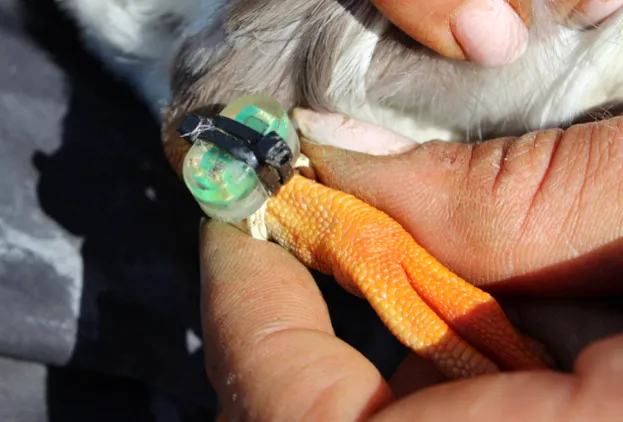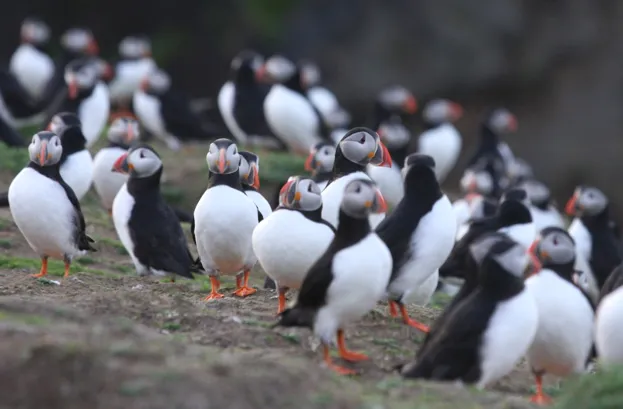The results of a new study have revealed that puffin pairs that stay on similar migratory routes breed earlier and more effectively the following spring.
Researchers used mini tracking devices called geolocators during the study to follow 12 puffin pairs over a six-year period in Wales.
Lead author of the study Dr. Annette Fayet, Oxford University, said that there were clear benefits for pairs to remain close.
“Following similar migration routes to one another may help synchronise returns to the breeding colony, which is known to be important for pair bonds and breeding success in many migratory birds,” she said.

Fayet added that other factors such as female foraging behaviour were also important for breeding success.
“Female puffins that spend more time fueling up over winter return to the colony in better condition and are able to lay higher-quality eggs, rearing stronger chicks.”
The puffins breed during spring and summer on Skomer Island in Pembrokeshire, Wales, which is managed by the Wildlife Trust of South and West Wales.
Until recently, tracking devices have been too big to be used on small birds such as puffins. The team hopes to use miniaturised tracking devices in the future to learn more about puffin ecology and behaviour at sea.

Main image: Puffin pair. © Annette Fayet